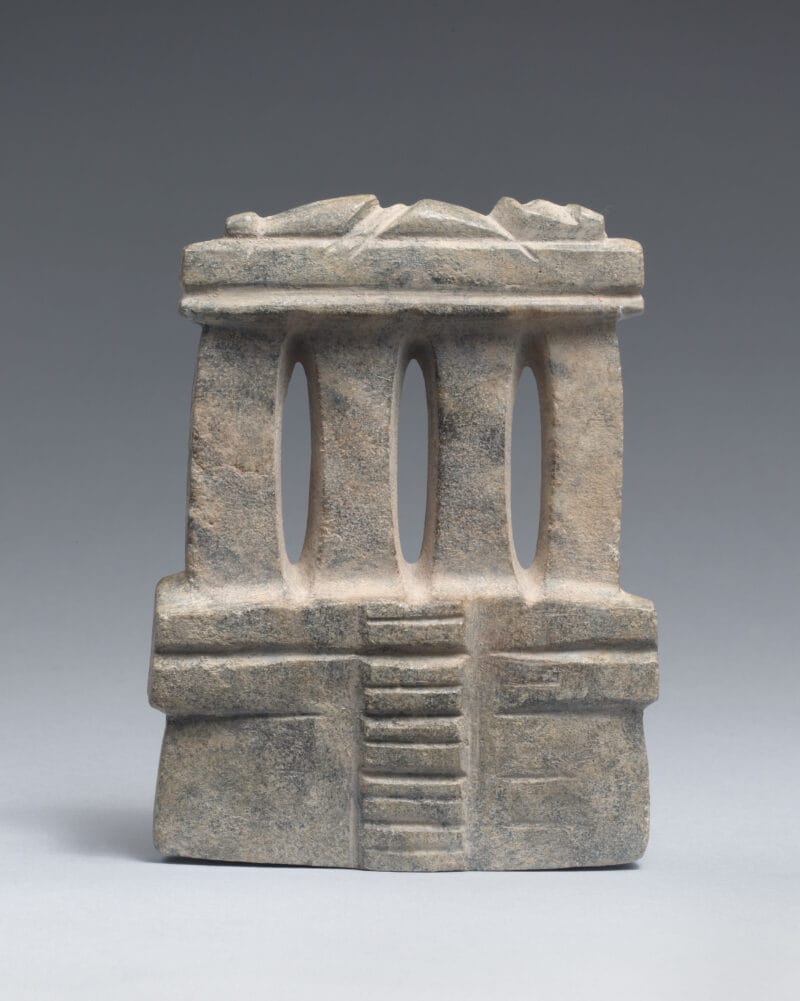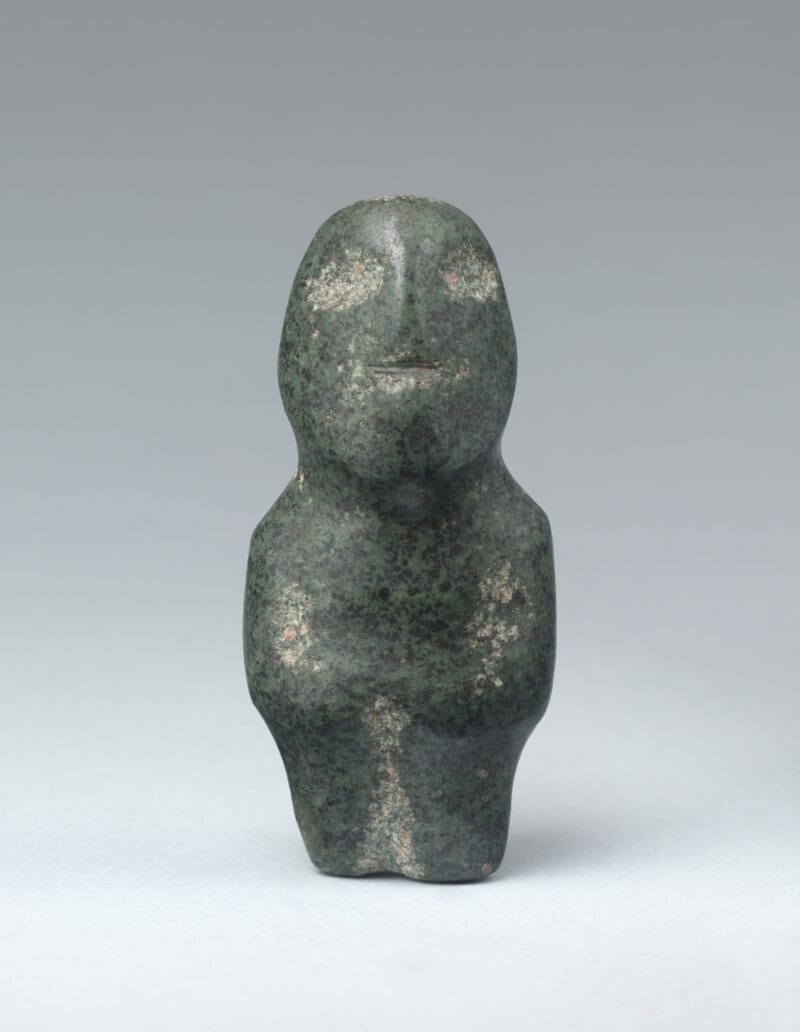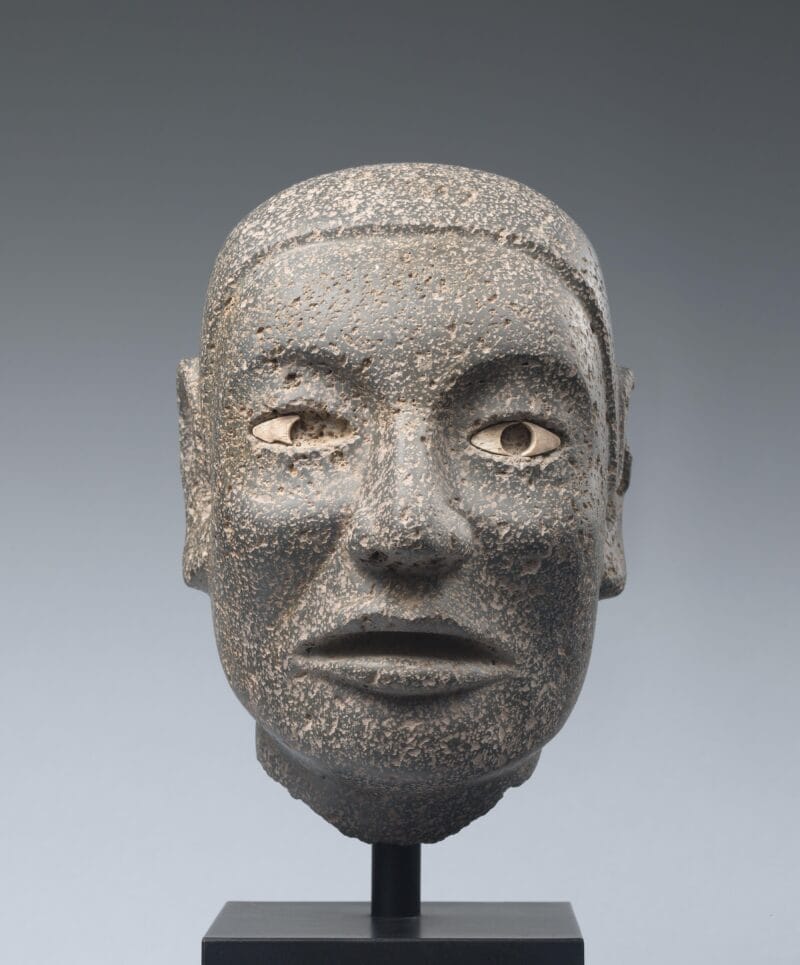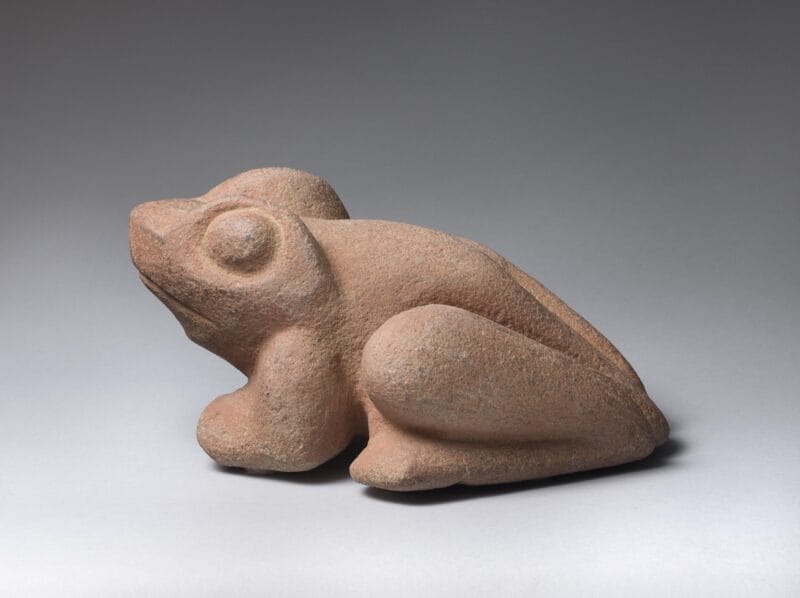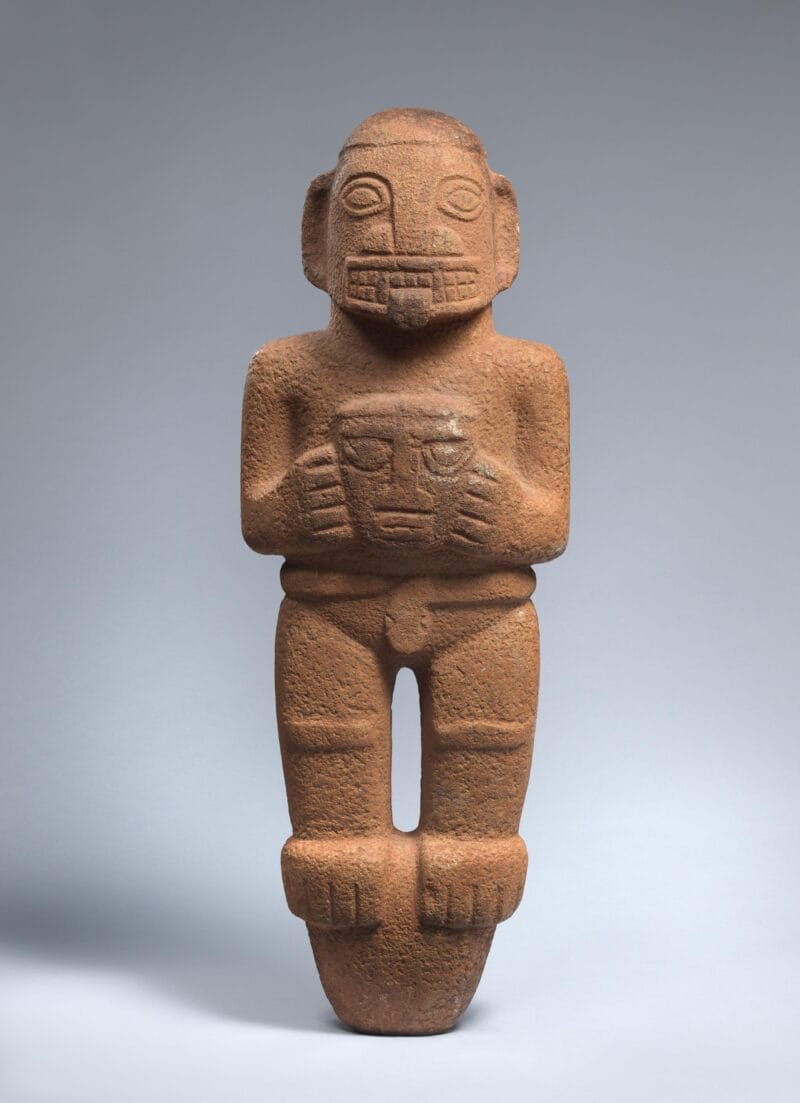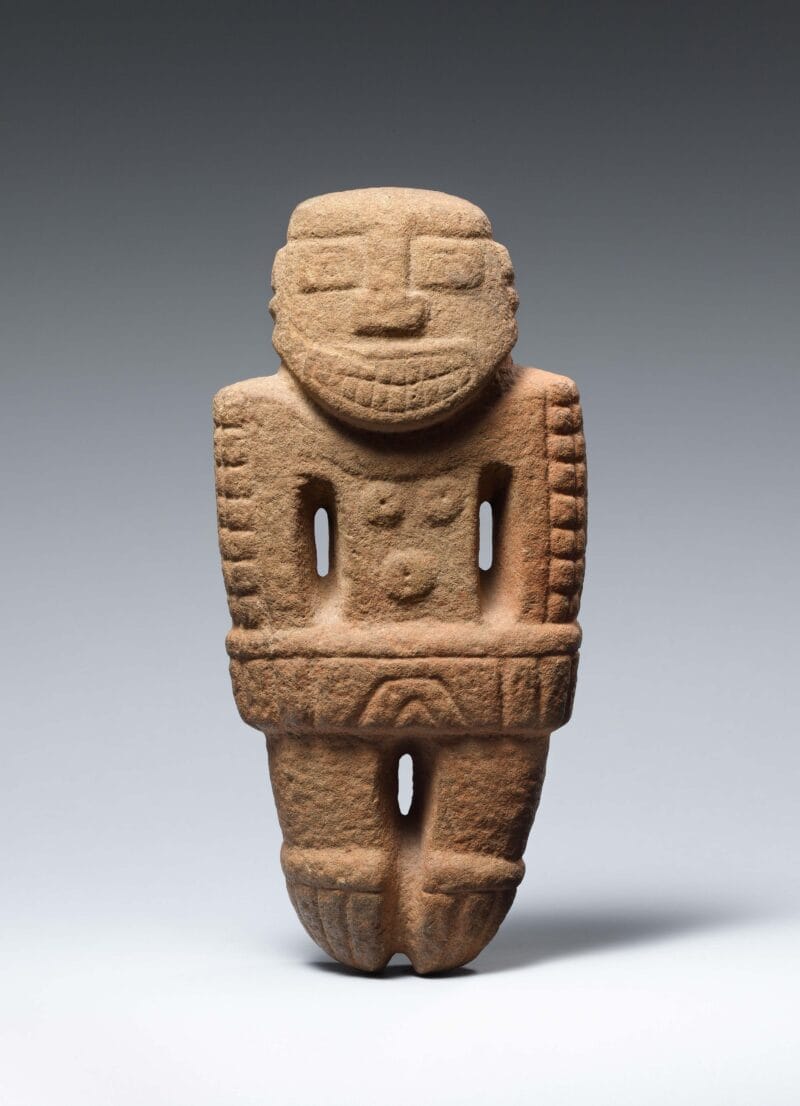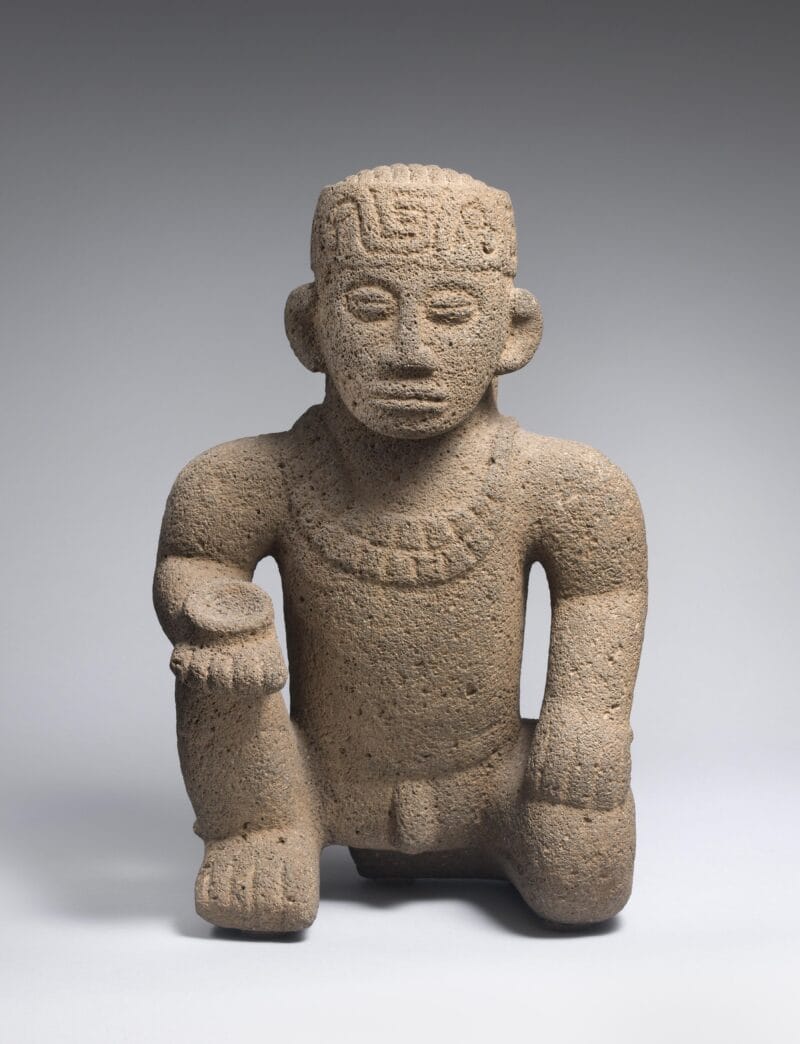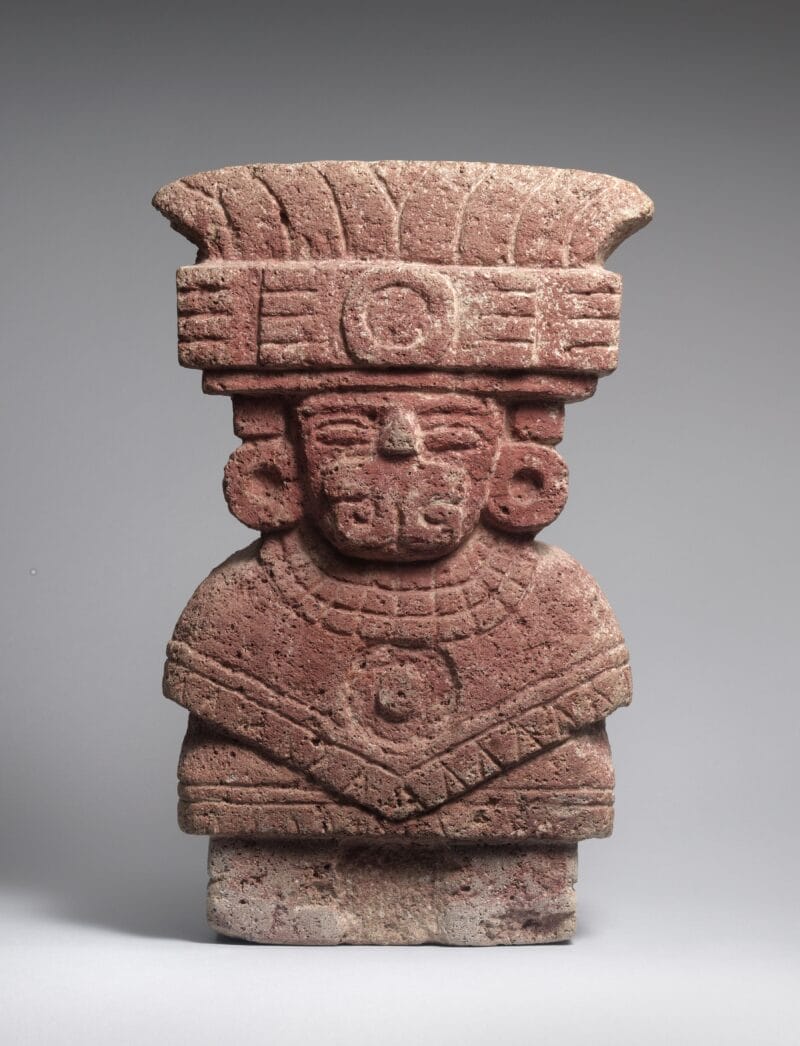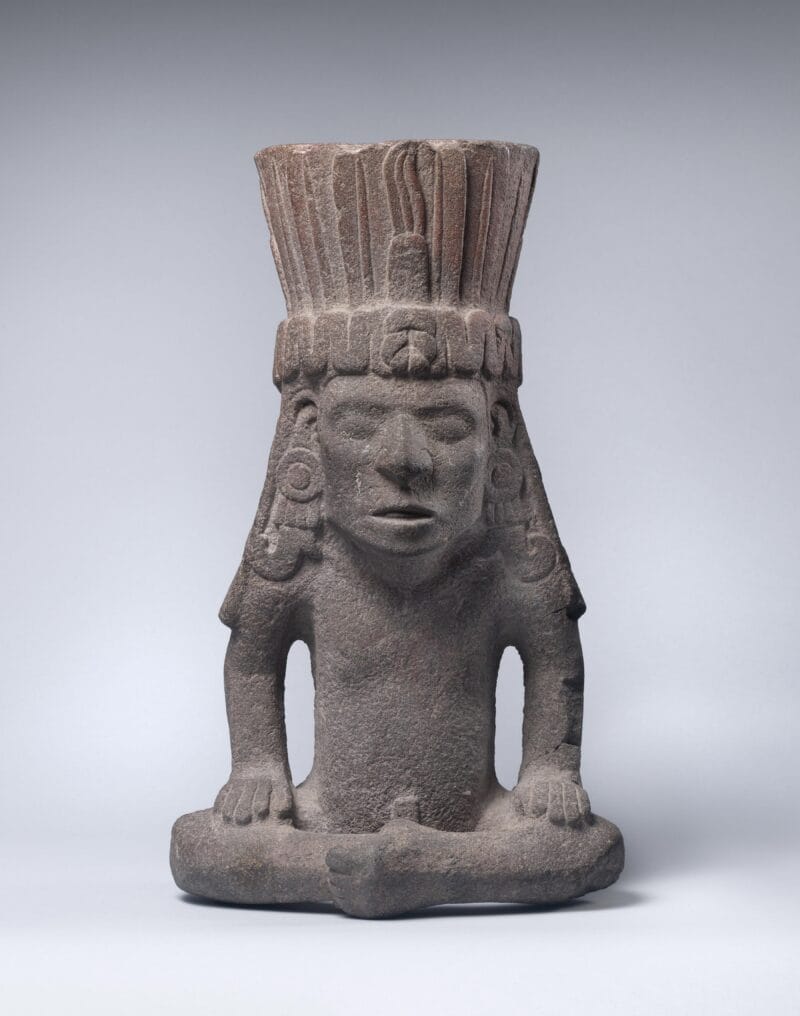
About the Object
Portraying a seated male with hands resting on crossed legs, this figure was fashioned from volcanic stone. The seated figure is unclad but wears elaborate earrings and a tall headdress of prized quetzal feathers, which have the remains of vibrant paint that adorned the entire figure in antiquity. Such adornments were strictly controlled by Mexica authorities and could denote an individual’s status and ethnic group. Indeed, multicolored quetzal feathers were often esteemed more than gold among the Mexica.
Additional Information
According to Indigenous traditions, around 1200 CE a group of Nahuatl-speaking peoples eventually known as the Aztecs abandoned their homeland called Aztlán and began migrating south to the Valley of Mexico. By 1250 CE, a group of Aztecs called the Mexica arrived in the region around Lake Texcoco. Finding the land already claimed by more powerful groups and other Aztlán settlers, the Mexica were forced to flee to an island in the middle of Lake Texcoco, where they believed the god Huitzilopōchtli (meaning hummingbird) would reveal to them their future home. Eventually, the Mexica came to a place where an eagle devouring a serpent was perched upon a flowering cactus. Interpreting this as a divine sign, the Mexica chose this place as their home and future capital, calling it Tenochtitlán, or “place of the cactus fruit.”
[Throckmorton Fine Art, New York, NY];
The Jan T. and Marica Vilcek Collection, 2001-2010;
Gift to The Vilcek Foundation, 2010;
Related Objects
You may also be interested in
Spotlight Series: Transcendent Creations
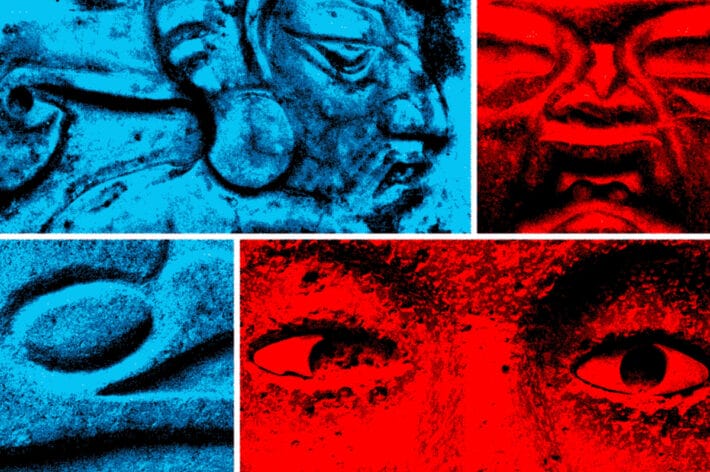
Iman Issa

Meleko Mokgosi

